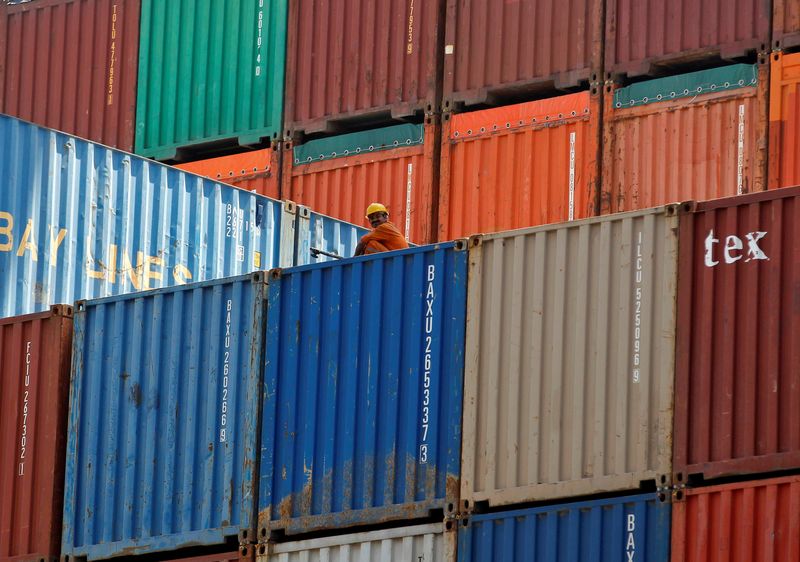By Ira Dugal
MUMBAI (Reuters) – A sequential increase in merchandise imports in May that led to the trade deficit widening to a five-month high signalled a stable local economy, economists said.
Merchandise imports advanced 14.5% over the previous month to $57.1 billion, while exports inched up 0.7% to $35 billion.
The merchandise trade deficit widened to $22.1 billion in May from $15.1 billion in the previous month.
“The recovery in imports points to domestic demand resilience,” said Madhavi Arora, lead economist at Emkay Global. Arora also pointed to a seasonal trend, citing a typical increase in imports in May after a slump in the previous month.
Gold imports more than tripled to $3.7 billion – the highest level since October. Oil imports climbed 3%, while core imports, barring oil and gold, advanced 12.1%.
Imports of industrial goods such as machine tools and consumer goods like electronics grew at a robust pace, indicating resilience in domestic demand, said Rahul Bajoria, chief India economist at Barclays.
Fertilizer imports also jumped significantly ahead of the kharif sowing season, Bajoria added.
Economists, however, do not see the wider merchandise trade deficit in May swaying expectations of a manageable current account deficit in this financial year.
“Falling commodity prices, an expanding services trade surplus and rising remittances have supported the improvement in external metrics so far,” said Bajoria. “This year, a slowing global economy implies commodity prices will trend lower on average compared with the previous year.”
Arora sees the current account deficit settling at 1.9% of the gross domestic product in this fiscal year ending March 31.
(Reporting by Ira Dugal; Editing by Dhanya Ann Thoppil)
